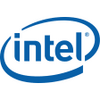Monitor the performance of your CPU
Monitor the performance of your CPU
Vote: (2 votes)
Program license: Free
Developer: CPU Rightmark
Version: 2.35
Works under: Windows
Vote:
Program license
(2 votes)
Free
Developer
Version
CPU Rightmark
2.35
Works under:
Windows
Pros
- Lightweight and non-intrusive software
- Real-time CPU monitoring
- Advanced CPU feature detection
- Energy-saving potential
- Broad OS compatibility
Cons
- May be complex for beginners
- Interface could be more user-friendly
- Primarily aimed at experienced users
Comprehensive CPU Monitoring
RightMark CPU Clock Utility (RMClock) is a lightweight utility designed to provide robust information about your CPU's performance and manage its power-saving features. It's a practical tool tailored for users who want to optimize their system’s power consumption, monitor the processor in real-time, and gain insights into the inner workings of their CPU.
Utility's Profile
RMClock stands out because it is more than just a standard monitoring tool; it comes equipped with optimization and analysis features specific to processor performance. Notably, it's a compact software solution that makes efficient use of your system’s resources, ensuring it does not encumber other processes while running. As such, it’s suitable for both older and newer Windows machines.
Upon deploying, users may appreciate how RMClock does not impose significant storage pressures, needing considerably less space than many other optimization applications. Since its inception, it has undergone a series of updates, with the latest version being 2.35, reflecting continuous improvements in functionality and compatibility.
Features and Usability
RMClock provides real-time monitoring of your CPU's frequency, voltage, and power-saving functions. It's particularly deft at identifying various processors, including the 45nm Intel Core 2 and Intel Celeron Dual Core CPUs—utility that can be critical for professionals needing to know the hardware's capability.
An automated detection of the Super Low Frequency Mode (SuperLFM) on Intel's Santa Rosa platform is among the notable features included in recent updates, showcasing RMClock's commitment to adapting to the latest hardware advances. Additionally, its tray icon animation gives quick visual feedback on CPU state, useful for at-a-glance monitoring.
For those concerned with energy efficiency, RMClock allows for adjustments of the performance on-demand state, ensuring that your system does not get locked into SuperLFM state and potentially slow down your work due to throttled performance.
The user interface, while robust, may initially seem daunting. However, with some time invested, users can unlock a great deal of functionality that can lead to a more tailored and energy-efficient system.
Performance
Tests and user reports suggest that RMClock operates with an impressive degree of accuracy. It also addresses common problems like correct CPU load measurement in SuperLFM state and keeps Performance on Demand profiles from being unresponsive.
Its functionality is significant when optimizing laptops for better battery life or improving desktop systems' performance without increasing energy costs. Even though the utility is aimed at more experienced users, the data provided can be beneficial for all users interested in their computer's performance.
Compatibility
RMClock supports a broad range of Windows operating systems, starting from Windows 98 to more recent versions, catering to a wide user base. The application's availability in English makes it accessible to a global audience.
Summary
RightMark CPU Clock Utility proves to be a valuable tool for those looking to get detailed processor information and optimize their system. With its light footprint, real-time monitoring, and insightful features, it is a formidable companion for both casual and power users.
Pros
- Lightweight and non-intrusive software
- Real-time CPU monitoring
- Advanced CPU feature detection
- Energy-saving potential
- Broad OS compatibility
Cons
- May be complex for beginners
- Interface could be more user-friendly
- Primarily aimed at experienced users




